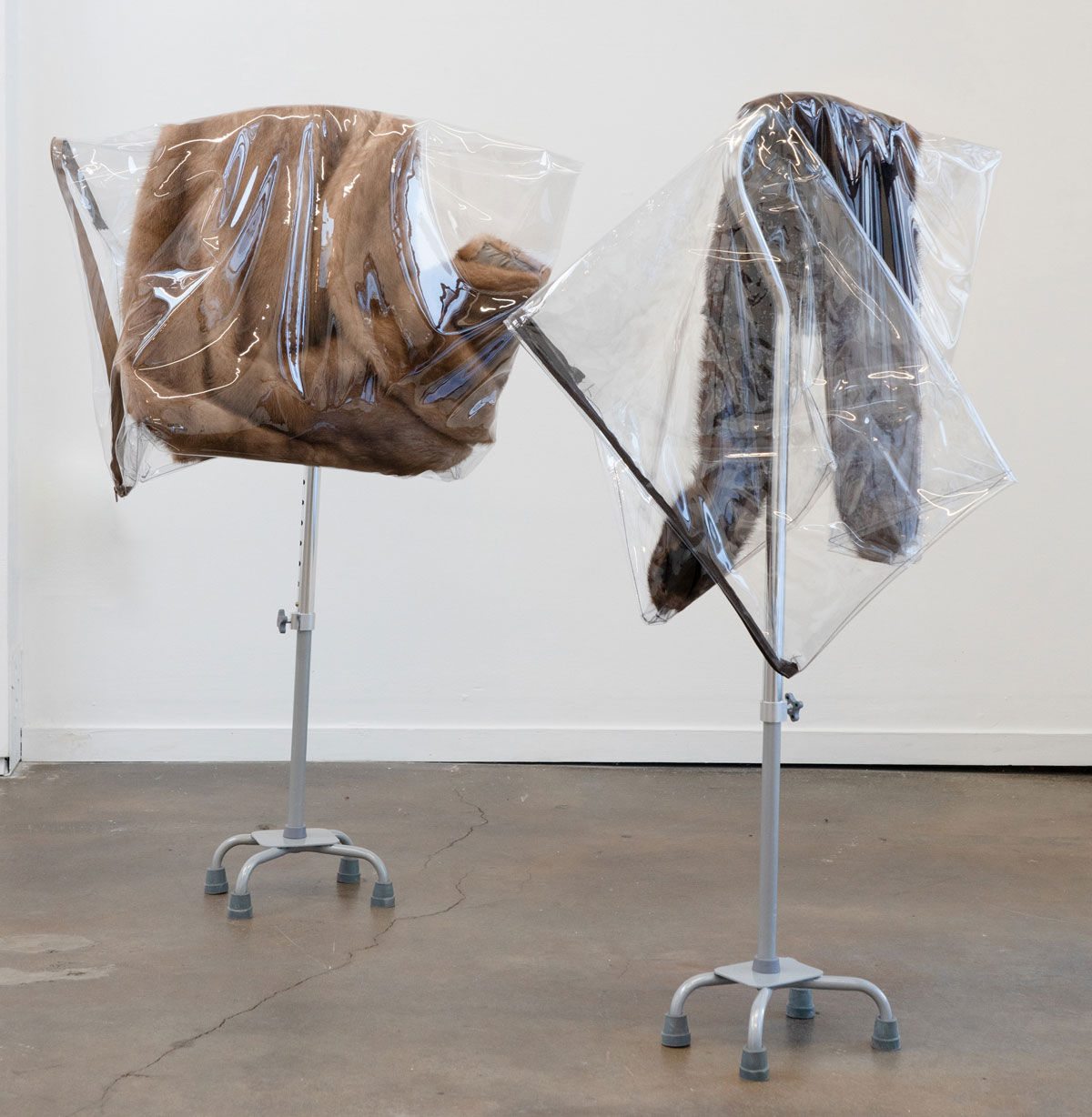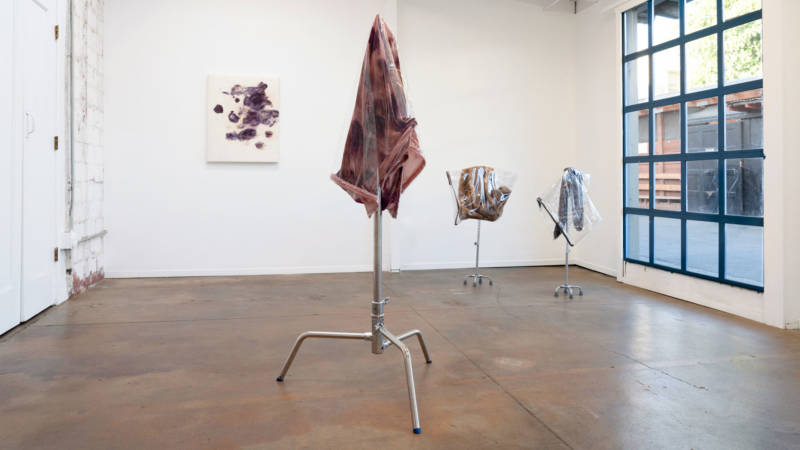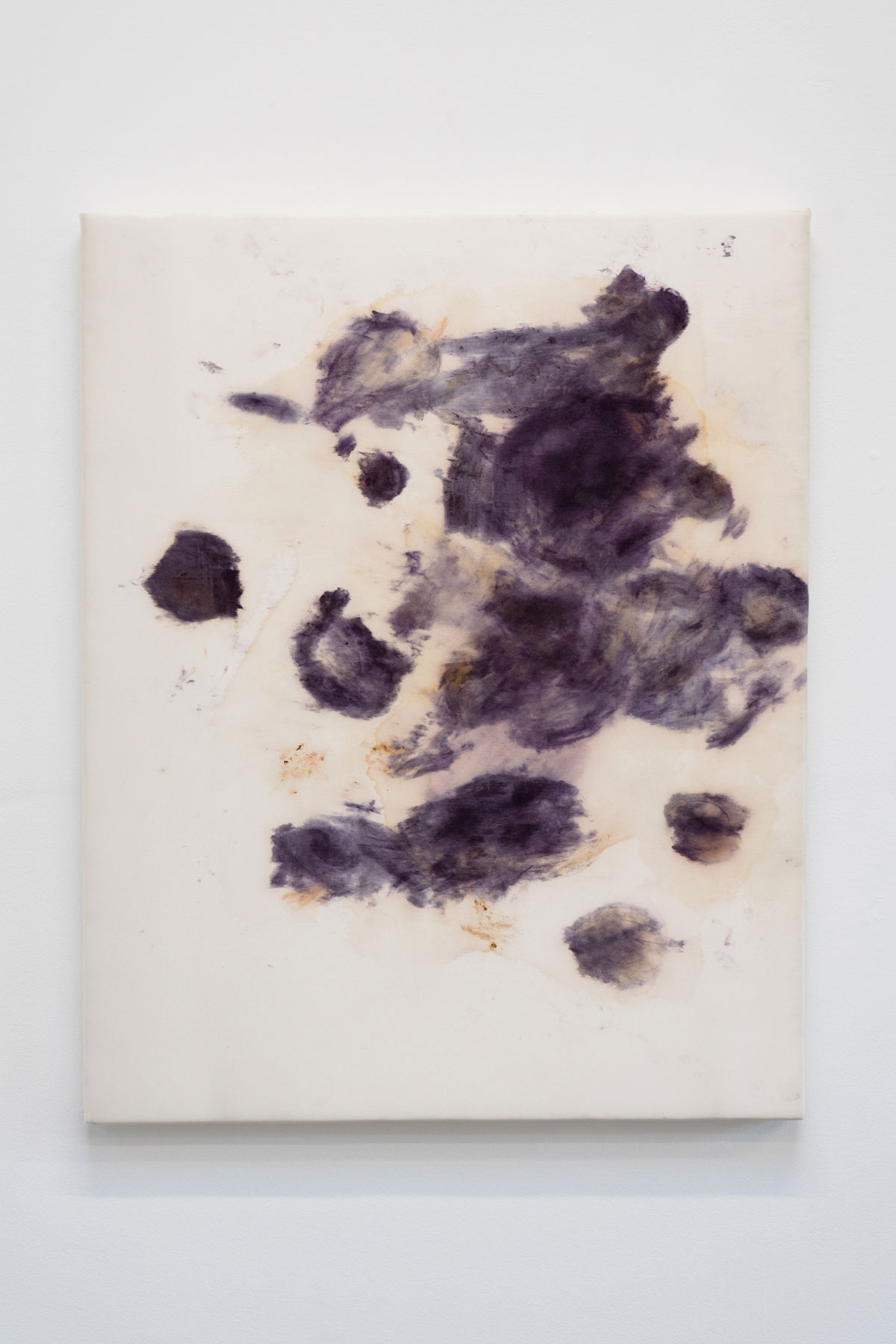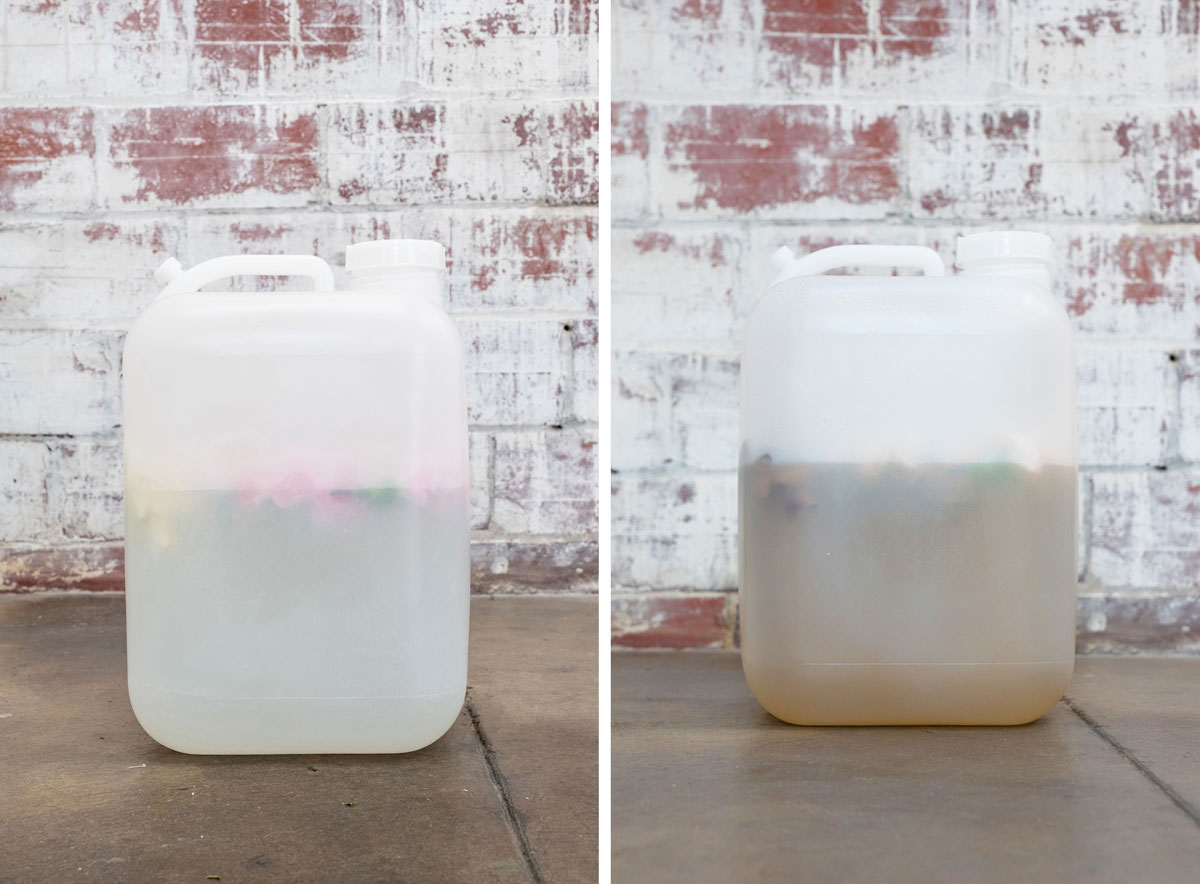“Art imitates life,” goes the old adage; and Quay Quinn Wolf’s art in his solo show, Pink Velvet Dress with the Fur Collar, is a rejoinder to the film Imitation of Life. Douglas Sirk’s 1959 adaptation of Fannie Hurst’s novel of the same name becomes the vehicle for Wolf’s meditation on race, ephemerality and the body. The film is one that the New York City-born and based artist watched with his grandmother as a child, and the show contains blended allusions to the film and her commentary.
The five pieces currently on view in Oakland’s Interface Gallery, are evocative in their own right, but are animated anew by a complementary viewing of the movie. It’s a masterful thematic marriage of sculpture and film, never relying too heavily on cinematic reference in a way that alienates audiences unfamiliar with it. The show is like a rabbit hole: you can delve as deeply into its themes as you would like or are able, and as you plunge deeper and deeper, Wolf’s work becomes more and more emotionally fraught.
Wolf’s fur and velvet pieces, all draped over metal stands, are as reminiscent of standing human figures as they are imbued with symbolic meaning. Two furs, separately titled Dreaming of Luxury, are wrapped in zippered PVC bags, citing the protective covers for upholstery (a familiar part of many black domestic landscapes) and the rarity of the furs themselves. The sparse, white and whitewashed brick-walled gallery feels paradoxically austere in the presence of these wealth-indicating fabrics. Fur is far more commonly associated with white old money than any artistic consideration of black life.

But in a recent New York Times essay, Jasmine Sanders parallels fastidious caring for fur as an extension of black wearers’ own bodies. “My mother likens caring for the coats to the attention her own mane requires,” she writes. The impulse to protect material items reflects the desire to preserve, to cling to permanence of matter that will inevitably rot and degrade. It reflects a desire to pass down items as well as the psychology of pride that they contain (Sanders also writes: “My mother’s furs are her insistence on public elegance in a world frequently inhospitable to her”), as well as a classed anxiety about commodity damage. The wealthy can replace easily, but the poor cannot.
The two furs on display, a vintage mink collar and a vintage mink fur stole, are folded, bagged and mounted atop walking canes as though to mimic storage or casual home display. They suggest mortality of both the commodity and whomever might be so lucky to elegantly adorn themselves with such attire. They also suggest, in their color, brown flesh, which differs from the wounded flesh of the pink velvet in the show’s centerpiece: I adored that velvet dress.





